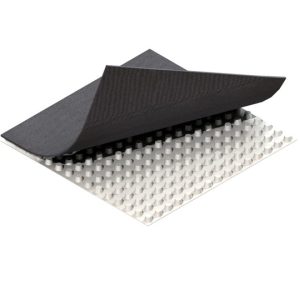
WHAT FACTORS INFLUENCE THE CHOICE OF PLC SPLITTER SPLITTING RATIO?
What Factors Influence the Choice of PLC Splitter Splitting Ratio?

A PLC splitter, or planar lightwave circuit splitter, is a passive optical deviceused in passive optical networks (PON) to split the optical signal from a single fiber into multiple outputs, enabling the distribution of signals to multiple users.
The splitting ratio of a PLC splitter determines the proportion of the input signal distributed to each output channel. Choosing the right splitting ratio is crucial for optimizing the performance of fiber optic networks. This ratio directly affects network performance, cost, and efficiency.
Explore More: Understanding PLC Splitters: Key Component in Fiber Optic Networks
Key Factors Influencing the Choice of Splitting Ratio
Network Architecture
The design and architecture of the fiber optic network are primary considerations in selecting the appropriate splitting ratio for a PLC splitter.
Point-to-Multipoint (PON) Networks
In PONs, a single optical signal is distributed to multiple end-users, typically in FTTH (Fiber to the Home) deployments. The choice of splitting ratio in such networks is influenced by the number of subscribers or users to be connected.
A higher splitting ratio, such as 1:64 or 1:128, allows more users to be connected from a single splitter, reducing the need for additional equipment and infrastructure.
However, this also means that the power of the optical signal is divided among more users, which can affect the signal quality and reach.
Centralized vs. Distributed Splitting
In a centralized splitting architecture, the splitter is placed in a central office or a point close to it, and the split optical signals are then transmitted over longer distances to reach the end users.
In this case, a lower splitting ratio, such as 1:8 or 1:16, is often chosen to maintain signal strength over the extended distance. Conversely, in a distributed splitting architecture, where the splitter is closer to the end-users, a higher splitting ratio might be more appropriate, as the distance the split signals need to travel is shorter, thus reducing the attenuation.
Loss Budget
The loss budget, which represents the total acceptable signal loss in a network, is another critical factor in determining the splitting ratio of a PLC splitter.
Insertion Loss
Insertion loss is the amount of optical power lost due to the splitter itself. As the splitting ratio increases, the insertion loss also increases because the optical signal is divided among more outputs.
For instance, a 1:2 splitter might have an insertion loss of around 3.5 dB, while a 1:64 splitter could have an insertion loss of 21 dB or more. Network designers must ensure that the total insertion loss does not exceed the network’s loss budget, which is typically set based on the sensitivity of the receivers and the power of the optical sources.
Distance and Attenuation
The distance the optical signal needs to travel from the splitter to the end-users also plays a role in the choice of splitting ratio. Longer distances result in higher signal attenuation, which must be compensated for by using a lower splitting ratio to maintain adequate signal strength. Therefore, in networks where end-users are spread over a large geographical area, a lower splitting ratio might be preferred to minimize the overall signal loss.
You May Also Be Interested In: Applications of PLC Splitters
Cost Considerations
Cost is always a significant factor in network design, and it heavily influences the choice of splitting ratio for PLC splitters.
Infrastructure Costs
A higher splitting ratio allows for more efficient use of fiber and reduces the need for additional splitters and optical network terminals (ONTs). This can lead to substantial savings in infrastructure costs, especially in large-scale deployments like urban FTTH networks.
However, the trade-off is that higher splitting ratios may require more powerful optical transmitters and more sensitive receivers, which could increase the cost of the active components in the network.
Operational Costs
Operational costs, including maintenance and upgrades, are also influenced by the choice of splitting ratio. Higher splitting ratios result in more users being dependent on a single splitter, which could lead to more significant service disruptions in the event of a splitter failure.
Additionally, higher splitting ratios may necessitate more frequent monitoring and maintenance to ensure signal quality is maintained across all outputs. On the other hand, lower splitting ratios can increase the number of splitters required, raising the complexity and cost of maintaining the network.
Future Scalability
When selecting a splitting ratio, network designers must also consider the potential for future network expansion and the need to accommodate additional users.
Anticipated User Growth
In areas where rapid population growth or increased demand for broadband services is expected, choosing a higher splitting ratio can provide the flexibility needed to add more users without significant changes to the existing network infrastructure.
Technological Advancements
As technology advances, new optical components and techniques may become available that can mitigate some of the drawbacks of higher splitting ratios, such as increased insertion loss. Therefore, choosing a higher splitting ratio could be a forward-looking decision, allowing the network to take advantage of these advancements without the need for major redesigns or reconfigurations.
Quality of Service (QoS) Requirements
The Quality of Service (QoS) requirements of the network are another key factor that can influence the choice of splitting ratio.
Bandwidth Demand
The bandwidth demand per user varies depending on the type of services offered. For networks providing high-bandwidth services, such as video streaming or online gaming, a lower splitting ratio may be preferred to ensure each user receives sufficient bandwidth. Conversely, in networks where users mainly require lower bandwidth services, a higher splitting ratio might be acceptable.
Latency and Jitter
Lower splitting ratios generally result in lower latency and jitter because the signal experiences less splitting-related loss and fewer delays in reaching the end user. This is particularly important for applications that require real-time data transmission, such as VoIP or online gaming. If low latency is a critical requirement, a lower splitting ratio should be selected, even if it means higher infrastructure costs.

Regulatory and Compliance Factors
Finally, regulatory requirements and industry standards can also impact the choice of splitting ratio for PLC splitters.
Compliance with Standards
Different countries and regions may have specific regulations regarding the design and deployment of fiber optic networks, including the permissible splitting ratios for PLC splitters. Network designers must ensure that their choice of splitting ratio complies with these regulations to avoid penalties and ensure smooth network operation.
Safety and Reliability Standards
In some industries, particularly in critical infrastructure sectors such as telecommunications and utilities, there may be stringent safety and reliability standards that limit the maximum splitting ratio to ensure network resilience and reliability. Adhering to these standards may necessitate the use of lower splitting ratios, even if higher ratios would be more cost-effective or efficient.
Recommended Read: How to choose the PLC splitter correctly?
Choosing the Optimal Splitting Ratio
The optimal splitting ratio for a fiber optic network depends on a careful balance of these factors. Network planners and engineers use various tools and techniques to calculate the appropriate splitting ratio based on the specific requirements of the network.
In general, lower splitting ratios are typically used for longer distances, higher subscriber densities, or when higher bandwidth requirements are needed. Conversely, higher splitting ratios can be used for shorter distances, lower subscriber densities, or when lower bandwidth requirements are sufficient.
Shop Now
Order your fiber optic products from Fibermart today and experience the difference. FiberMart‘s commitment to quality and reliability sets us apart. <a href="https://www.fiber-mart.com/about-us-ezp-14.html?chapter=10"&


